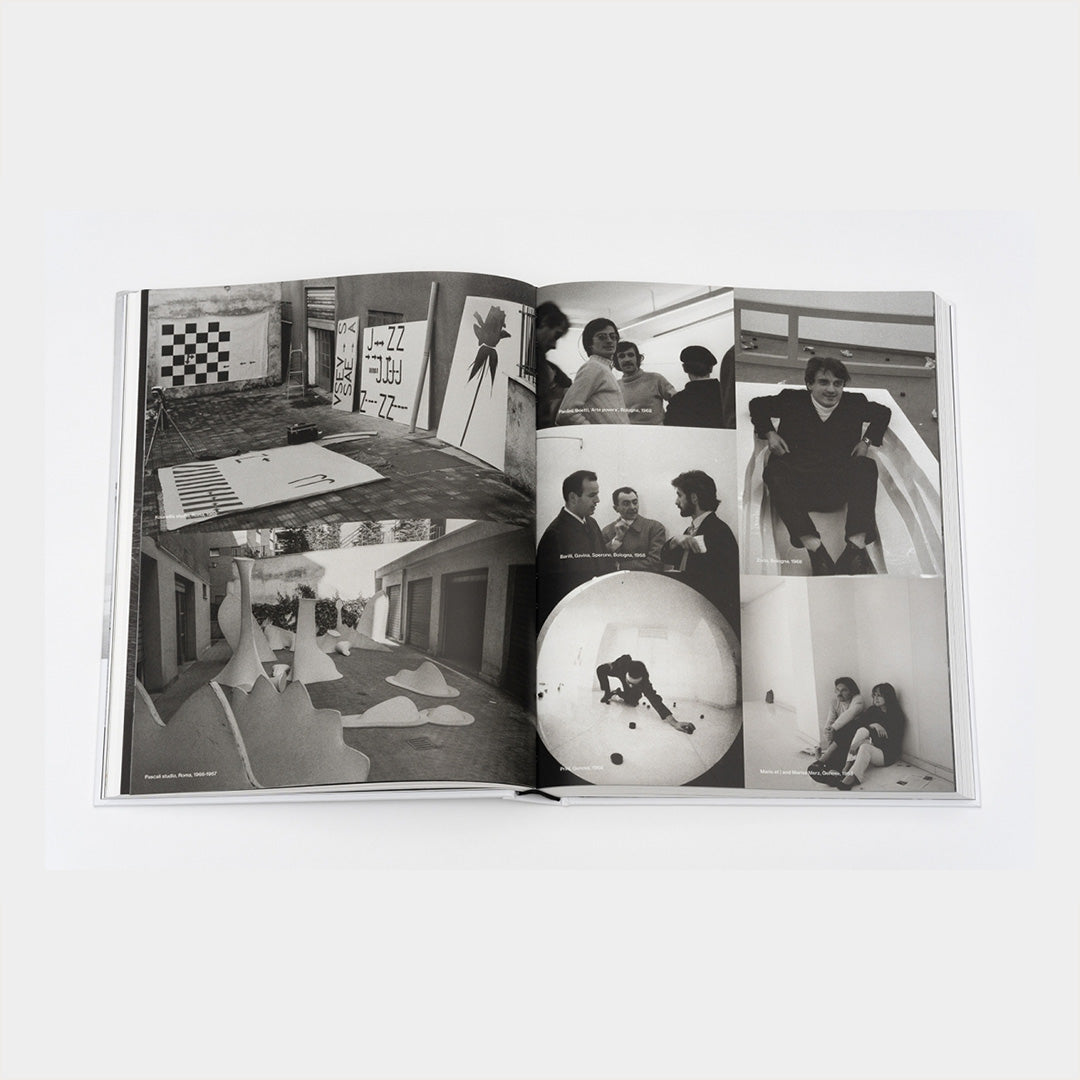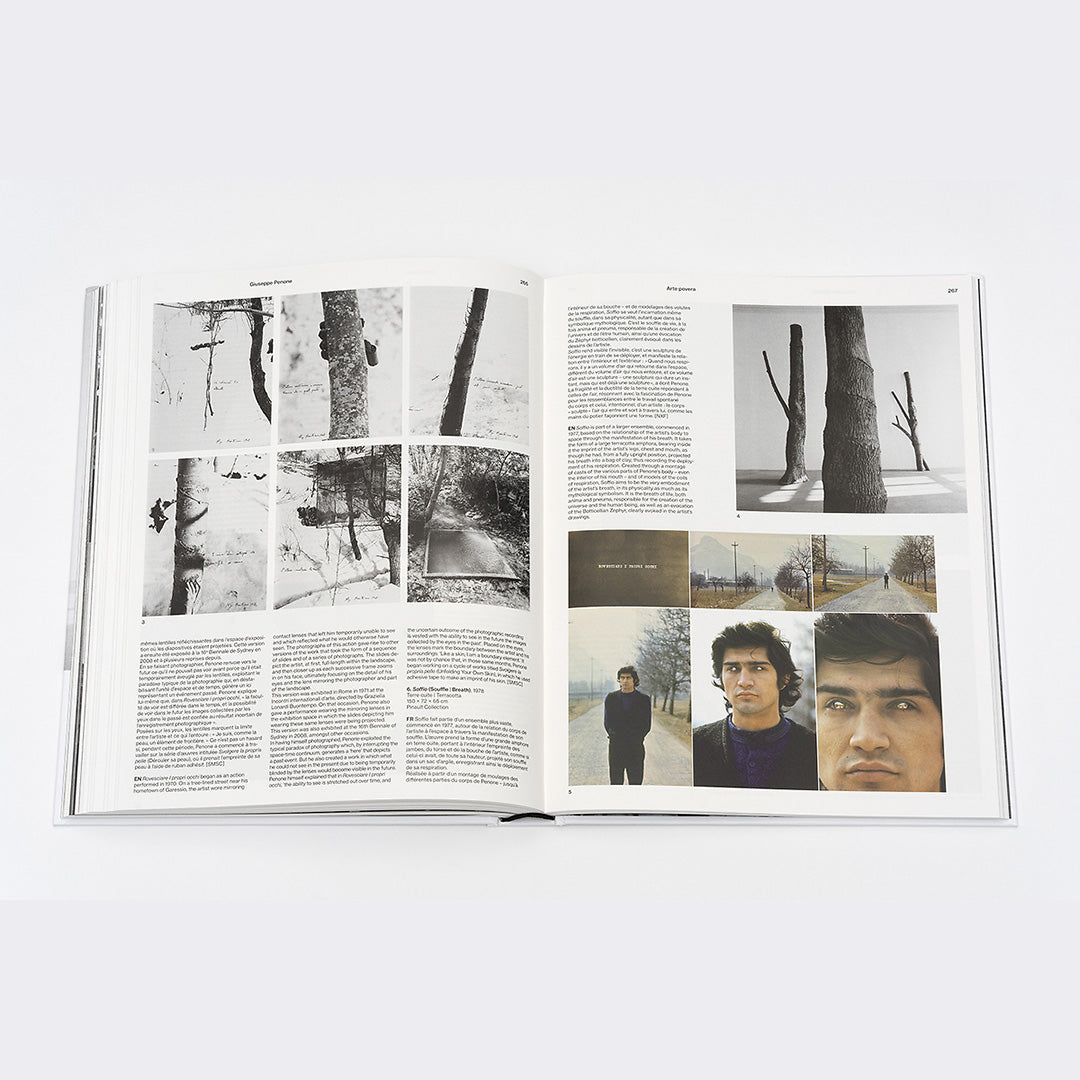Poor art
- Authors: Text by Carolyn Christov-Bakargiev, Text by Gabriele Guercio, Text by Marcella Beccaria, Text by Riccardo Passoni, Text by Fabio Cafagna
- Publishers: DILECTA
- Date of Publication: 2024-11-05
- Pages: 352
- Dimensions: 287mm x 225mm
Co-edition Dilecta and Bourse de Commerce – Pinault Collection Amid the
In the 1960s, Italian artists began to exhibit together, under
the standard of the expression "arte povera" - poor art -, an expression coined
in 1967 by Germano Celant, art critic and exhibition curator, who
adapts the concept of “poor theatre”, put forward by the director of
experimental theater Jerzy Grotowski. Artists associated with this movement —
Giovanni Anselmo, Alighiero Boetti, Pier Paolo Calzolari, Luciano Fabro, Jannis
Kounellis, Mario and Marisa Merz, Giulio Paolini, Pino Pascali, Giuseppe Penone,
Michelangelo Pistoletto, Emilio Prini, Gilberto Zorio – are interested
mainly at the intersection of art and life, nature and
culture. They suggest that the essence of a work of art lies in the experience
subjective that we make of a material, its transformations and space.
They focus their attention on the "primal" energy that runs through all
the facets of life – an energy experienced directly, which escapes all
representation, ideology or language. This energy corresponds to the forces
fundamental physics of nature (gravity and magnetic fields) and
also refers to the primordial elements of human nature (the
vitality, memory, emotions). These artists, originally from Turin, Genoa,
Bologna, Milan and Rome create in a very unique, free way, not
conventional and non-dogmatic, both in the field of painting and
sculpture, drawing and photography; they are the ones who produce the
first installations, performances and actions in the history of art –
moving from one medium to another without worrying about "style", using
humble materials (natural and artificial) in order to generate a real
experience of the here and now. Arte Povera artists are interested in
our perception, combining their fascination with everyday life with a deep
respect for artistic tradition. Wary of intellectualization
excessive of the artistic field, they borrow from the baroque aesthetic its
heterogeneity and its apparent incoherence. At the Bourse de Commerce – Pinault
Collection, the exhibition, curated by Carolyn Christov-Bakargiev, expert
internationally recognized on the subject, traces the history of this movement,
from its beginnings in Italy to its development throughout the world, in
based on a selection of works by the thirteen main artists of the arte
povera from the Pinault Collection, that of the Castello di Rivoli and the
Fondazione per l'Arte Moderna e Contemporanea CRT, or other prestigious
collections, including those of the artists themselves. Carolyn Christov-Bakargiev is
a writer, art historian and exhibition curator
Italian-American. She notably directed the Castello di Rivoli Museo d'Arte
Contemporanea and the Fondazione Francesco Federico Cerruti in Turin between 2016 and
2023. Named the most powerful person in the art world in 2012 by the
ArtReview's Power 100 ranking, Christov-Bakargiev was the director
artistic director of dOCUMENTA (13) (2012), an event for which she also
also organized workshops, seminars and exhibitions in Alexandria
(Egypt), Kabul (Afghanistan) and Banff (Canada). Gabriele Guercio is a
independent researcher based in Milan. He writes on modern and contemporary art,
as well as on the history of art theory. Marcella Beccaria is
art historian, curator and author. She is currently
Chief Curator and Curator of Collections at Castello di Rivoli
Museum of Contemporary Art. Riccardo Passoni is an art historian, critic and
exhibition curator. Fabio Cafagna is an art historian
Share





